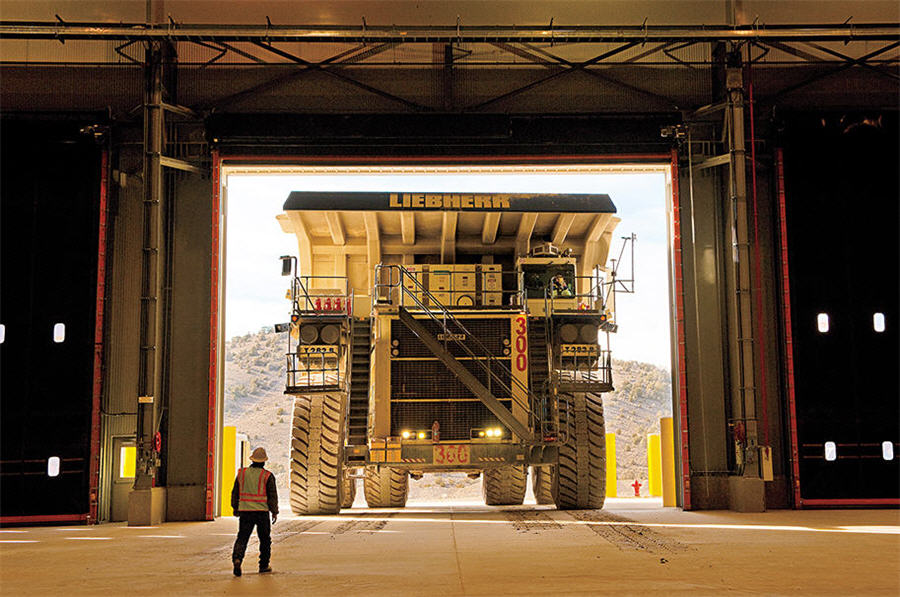
Barrick Gold, the world’s biggest gold miner, is staking new ground in a dogged push to overhaul its operations, seeking scarce artificial intelligence experts to oversee projects using technology for everything from exploration to robot-run mining.
But for an industry perceived as slow-moving and macho, attracting prized human resources can be as difficult as striking gold – particularly as technology titans like Facebook and Alphabet Inc.’s Google chase the same talent.
Though the mining sector is late to the so-called “digitization” party, Barrick and others are compelled to push productivity gains in the face of rising costs and depleting resources.

Miners are stepping up investments in technology that ranges from driverless trucks to computers that sift through and make sense of mountains of data from operations.
That shift could deliver global efficiency gains of $373 billion by 2025 for the industry and its stakeholders, estimates consulting giant McKinsey & Co.
“There’s so much value that can be created in mining, if we run our mines predictively, rather than reactively,” said Michelle Ash, Barrick Chief Innovation Officer.
At Barrick, artificial intelligence (AI) managers will oversee projects that use computers to study reams of data, from sensors tracking equipment and workers, to better understand mine geology, for example. Computers could analyze that information to predict where to mine the best ore, she said, or when equipment maintenance is needed, for example.
But the competition for the world’s top programmers, data scientists and AI researchers – who are critical to unlocking the value of high-tech mines – is fierce.
David McKay, chief executive of Canada’s biggest lender, Royal Bank of Canada, likens the pursuit of AI workers to “the primary battle ground” in an “arms race.”
While the mining industry pays better than some other sectors, such as media or retail, it may fall shy of a AI worker’s dream workplace, said Rachel O’Connor, who heads a consulting team at global recruiter Korn Ferry.
“Mining is not known for a lack of hierarchy, or a lot of freedom to innovate,” she said.
But that has not stopped Barrick, which is spending $100 million in a partnership with Cisco Systems, from trying to create the right environment.
Having already wired its underground Cortez mine in the Nevada desert, Barrick predicts digital mining will drive production costs down to $700 an ounce by 2021, from current levels of $740-$770.
As it scouts for AI project managers and data scientists for the first time, the miner is also sowing recruitment seeds early and broadly, while shifting its corporate image beyond big machines moving big rocks.
Barrick spotlights its global ‘hackathons’, the mining-industry-first virtual job fair it held in August, or the Hackergal http://hackergal.org/ school coding program it supports.
“The need is greater than ever,” said Richard Sellschop, principal at McKinsey, adding that recruiting the right tech talent for mining is a pinch point.
“We’ve seen over the last bit-more-than-a decade that productivity in mining has been negative on a global basis,” he said.
From 2005 to 2015, mine productivity declined by 3.5 percent annually, on average, a McKinsey study showed.
While some miners struggle to find the best workers, the industry has seen success, like early adopter Dundee Precious Metals.
The small gold miner is now testing computer analytics to determine more efficient ways to grind and process rocks, for example, or predict when its trucks need repairs, before breaking down, said Chief Executive Rick Howes.
That project, which runs until 2019, could cut mine costs by 30 percent, he said. Dundee’s first digitization project doubled output and cut costs nearly 45 percent, from 2010 to 2013, by connecting workers and equipment over a wireless network at its underground Bulgarian mine.
“Late adopters, or those who struggle to make that transition, will probably have a difficult time surviving,” Howes said. “The risk is high.”
For self-proclaimed technology “evangelist” Jed Schneider, 41, working at a mine was never part of his career plan. He was developing high-tech health care tools for a Las Vegas start-up when Barrick came calling.
But Schneider saw a trailblazing opportunity and is now working on custom software programs for Barrick that track haul trucks, for example, automate work orders, and analyze data for better supply chain decisions.
“I am in a position where I am one of the first people in the door in an industry that has yet to have any kind of strategy behind the digital transformation,” he said. “We’re doing something that is really cool.”
Branding plays a key role in attracting data workers, said Barrick recruiter Richa Garg, but many are lured by the opportunity to see the end results of their hands-on work.
“Part of what we’re doing is looking to see how we can show why we’re not your grandfather’s mining company,” said President Kelvin Dushnisky.
(Reporting by Susan Taylor; Editing by Denny Thomas and Edward Tobin)